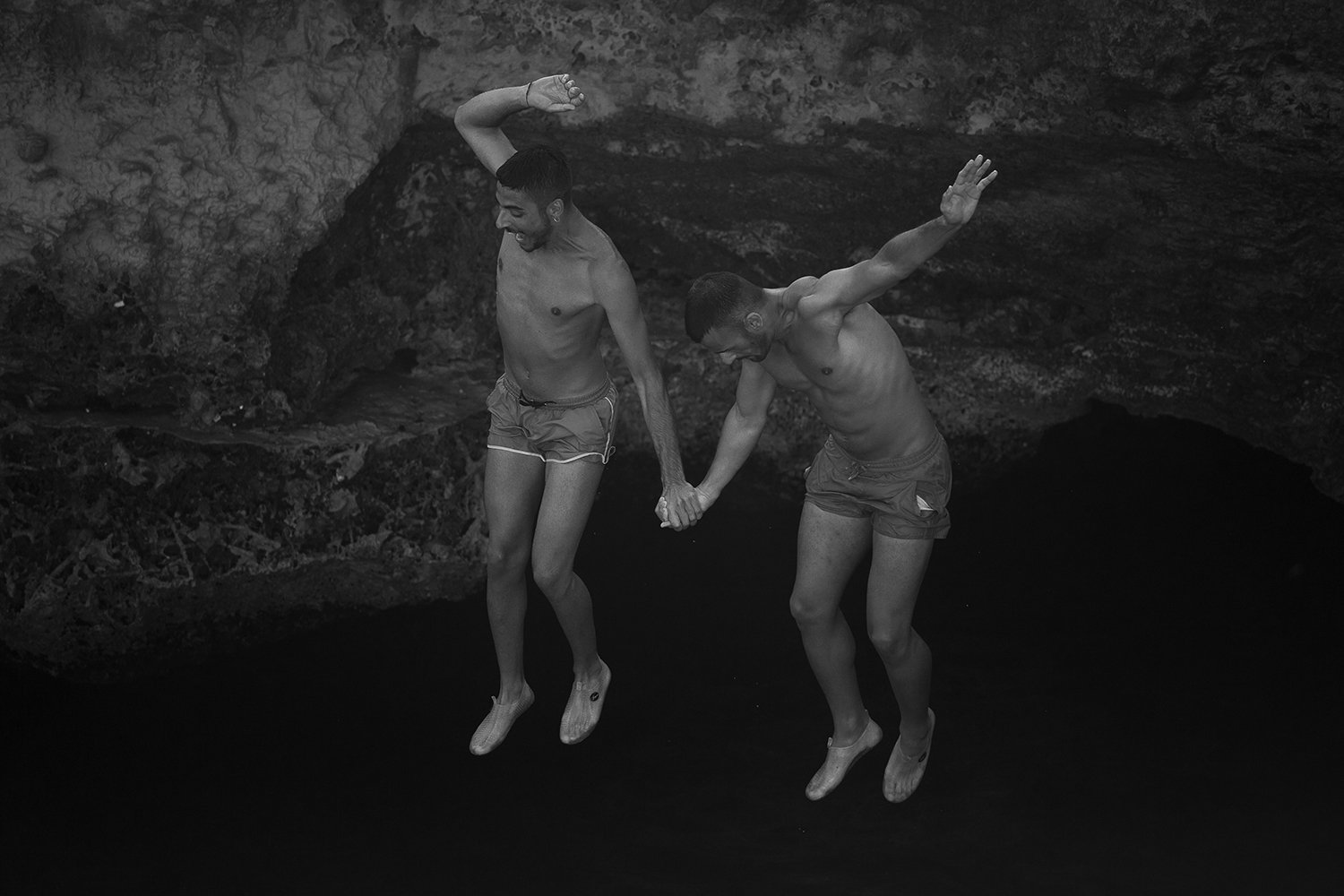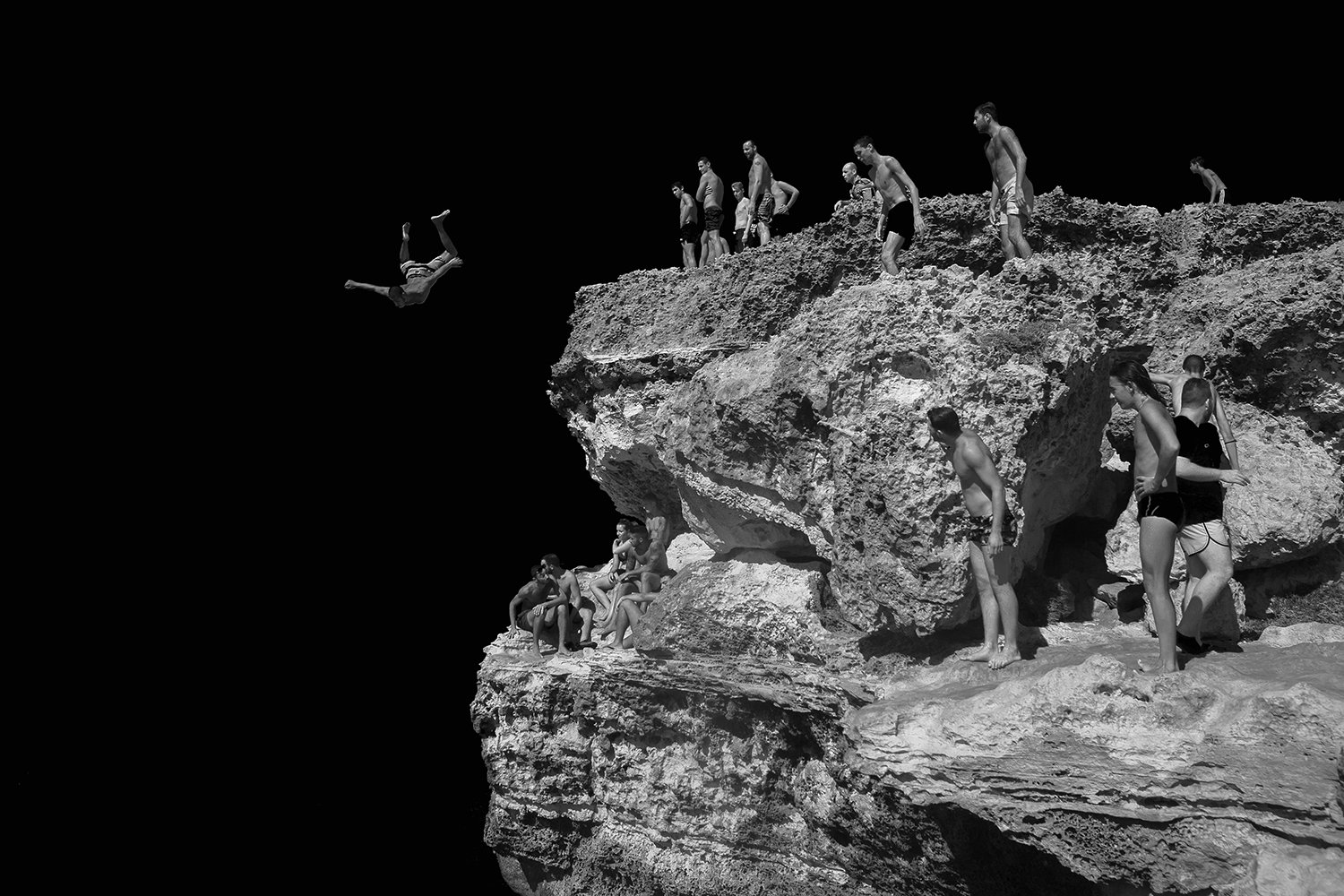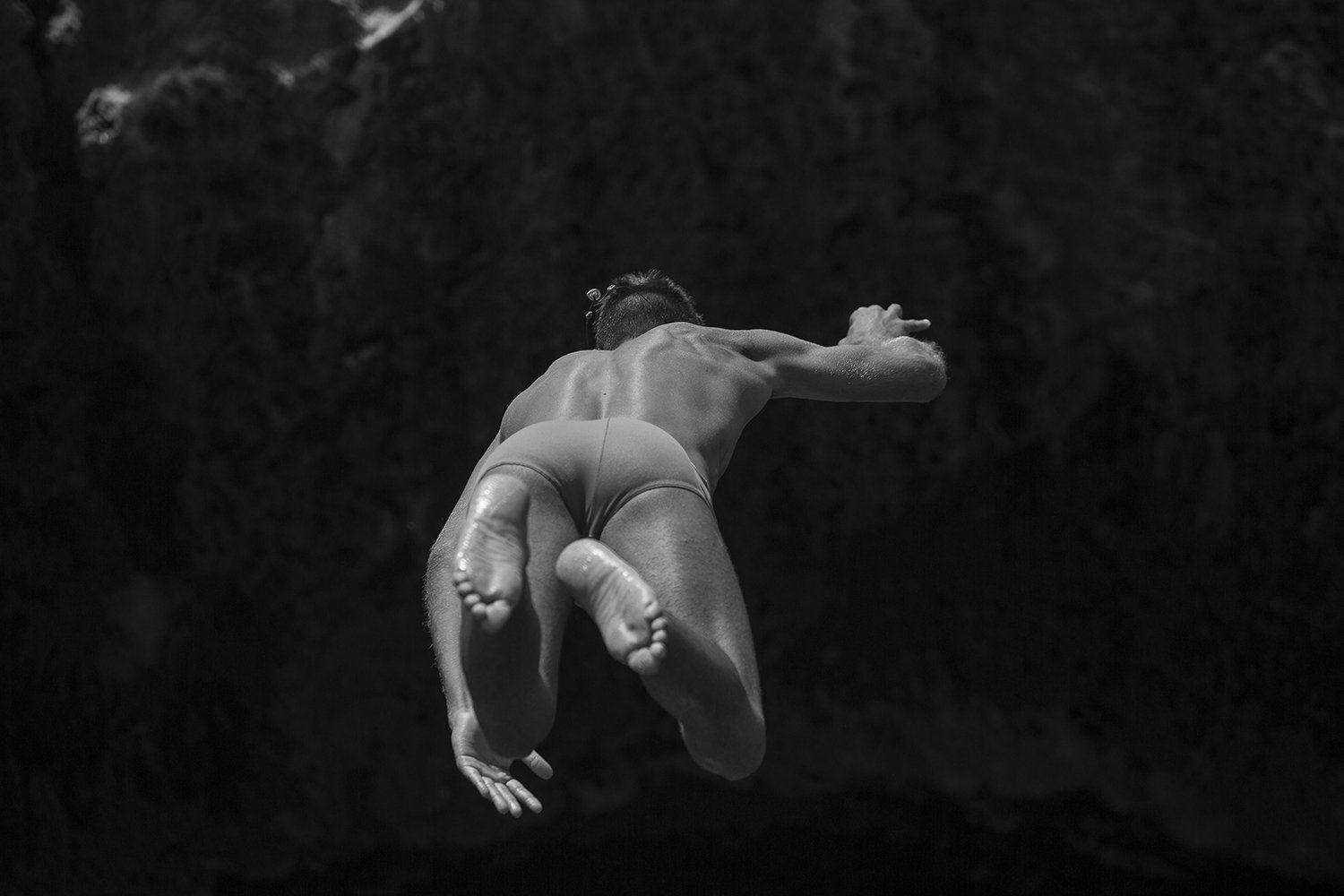The Art of Leaping in the Dark
The act of diving, whatever the era or geographical area, has always brought out ambiguous feelings in people: of fascination, affirmation and carefreeness, but also of fear and loss of control of one’s body in space; in some cases becoming a challenge aimed at symbolising the overcoming of a limit or even a rite of passage.
The Archaeological Museum in Paestum is home to a Greek tomb, found in a necropolis, with a fresco depicting an unusual subject: a naked young man diving into the sea; a metaphor of the passage from life to death. A dive was therefore used as a perfect allegory of life, symbolising the passage from a known world, the earth, to an unknown one, the sea. Between land and sea, the air transforms the fall into an exemplary feat, into an athletic pose, into art.
The dive can also be an initiation rite. On the island of Pentecost, in the Melanesian archipelago of Vanuatu, a ritual known as Naghol, meaning “leap into the void", is undertaken by teenagers, taking its inspiration from the sport of bungee jumping. Every year, during the yam harvest (the tuber represents the main food resource of the island), dozens of young people throw themselves off a tower that is over 25 metres high, with their ankles secured by vines. A spectacular initiation ceremony focused on courage: in order to become men, males must prove their worth with a leap into the void and thus ingratiate themselves with fate. Each jump is accompanied by screams and prolonged applause.
These concepts represent the springboard for the photographic project, where the act of diving becomes a metaphor for a leap into the unknown and for transition, from which the protagonists emerge reinvigorated, transformed, freed.
In recent years, I have photographed divers in some parts of the Salento area, such as the Grotta della Poesia, a natural cave shaped by the Adriatic Sea in the rocky coast over the centuries. It is here, in this sort of natural pool, despite the ban on swimming due to the geomorphological danger posed by the cliff, that the population comes to experience what has become a collective ritual, in which the fear of the void is faced with the support and encouragement of people waiting for their moment to dive. The fear of the individual is shared and, at times, the wait to dive into the void can even last for minutes, during which there is a respectful silence and, following the leap, collective applause.
In this project, I worked by subtraction: attenuating the summer setting and intensifying the action, the performance of the bodies in flight, carrying out a process of abstraction, inviting the observer to dwell on the three structural elements in the series: the human figure in the void, with postures that can be deformed by instinct, the air that this moves, and finally the rock, the prehistoric element, in the same way that man’s tension towards the unknown, experimentation of the unknown, his desire to “go beyond” is prehistoric - synonymous here with archetypal.



















